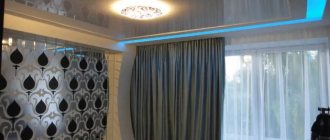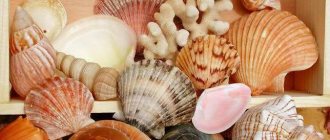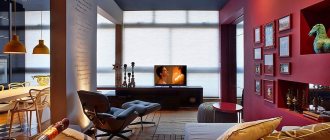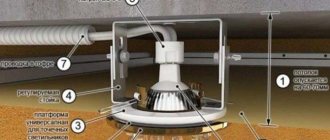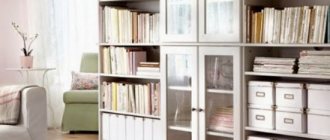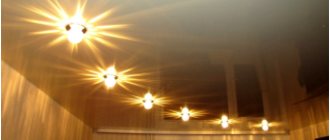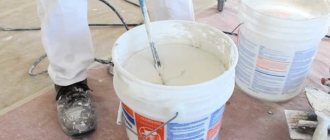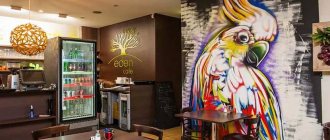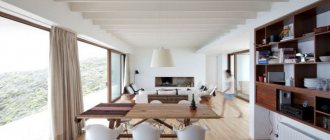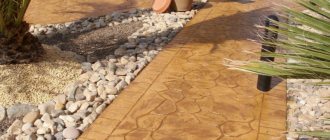Relief is a special sculptural technique when the composition is created only partially in the form of a three-dimensional image on a plane. It is considered a separate subtype of art. Data on where the relief was first applied has not been preserved. It developed unevenly in Ancient Greece, India, Ancient Rome, Egypt and the countries of the Far East. One of the most famous examples of relief, which has survived to this day in a partially destroyed form, is the Pergamon Altar of Zeus, now located on the museum island in Berlin.
general characteristics
The monument is a structure with a wide staircase and a colonnade, under which there is a long panoramic relief. It depicts separate groups of people, animals and giants engaged in battle. Relief is classified into four types:
- Bas-relief. The sculptures protrude less than half above the flat background.
- High relief. The sculptures greatly extend beyond the background and are sometimes even partially separated from it.
- Counter-relief. It is a negative, that is, the composition is not convex, but concave.
- Ankre, or koylanaglyph. Only the outline of the image is cut out on a plane (usually a wall), that is, the composition is as concave as the counter-relief, but its depth is the same everywhere. This type is considered more primitive. It became widespread only in Ancient Egypt.
Bas-relief was rarely used in the interior of simple houses. Only very wealthy people who had real palaces at their disposal could afford it. More often, bas-reliefs were used to decorate the exteriors of Gothic-style houses and the interiors of cathedrals and churches. In modern interiors, decorating with such sculptural compositions has become accessible. You can even create a bas-relief yourself. We’ll talk further about the features of such sophisticated decor and how to make it yourself.
Advantages and disadvantages of bas-relief on the wall
Like other types of finishing work, the relief on the wall has its advantages and disadvantages. Among the special advantages is the ability to create images in almost any room. If all standards are observed in the process of drawing up and applying decorative ornaments, you can:
- Mask errors in the wall, including significant differences;
- You can create a whole panel and thereby occupy an empty wall;
- Visually zone the room;
- The ability to create unique compositions;
- Individual interior with special charm;
- If desired, the entire process can be carried out independently, without resorting to the services of a specialist.
Among the main disadvantages:
- Having some experience, creativity and at least basic skills as an artist;
- The process is labor-intensive, meticulous in drawing and performing the smallest details, which is why most often all work is entrusted to craftsmen. The cost of such work is quite high.
But still, if you have a lot of information with step-by-step instructions, you can create a high relief on the wall yourself. There would be desire and time.
Pros and cons of bas-relief
The bas-relief is made of wood, clay, alabaster, plaster or stone. The latter method is very labor-intensive and requires a high level of skill from the sculptor, since any mistake cannot be corrected. Bas-reliefs are created from wood by carving, and clay is the most accessible material, suitable even for beginners. They were still doing modeling during their school years. Bas-relief products, unlike ordinary sculptures, allow you to maintain a 1:1 scale and at the same time save on materials. After all, clay, for example, to sculpt a full-length person will require almost 60-70% less than to create a similar full-length statue. Previously, any types of reliefs decorated walls and ceilings and at the same time remained part of them, that is, the composition was static and could not be moved. Now you can make a small bas-relief on a special canvas stand and move it around the apartment if necessary.
Volumetric compositions are invariably associated with classical styles. Indeed, such decor would look appropriate in the design of the same name, Art Nouveau, Art Nouveau, Baroque, Rococo, Empire. But here we are talking about traditional sculptures, with soft lines and many small, elaborate details. In the center of the composition, as a rule, people, deities, mythical creatures or complex ornaments appear. A minimalist bas-relief will organically blend into the modern style:
- City panorama;
- A piece of forest;
- Volumetric “swirls” of the shaken liquid;
- Imitation of an “old” layer of finishing or brick under crumbling plaster.
Three-dimensional images of schools of fish, skates, algae, coral “fields” and fantastic panoramas of Triton’s possessions are suitable for the marine style. Of course, a beginner will not be able to make such compositions the first time without errors. You will have to train and get better at it for a long time. This is perhaps the main drawback of the bas-relief. It is impossible to create it beautiful without spending a lot of time on learning the skill of a sculptor. The only exception will be abstract reliefs, which are suitable for the style of the same name or minimalism. Unlike decorative painting, bas-reliefs do not need additional highlighting with color. The backlight will perfectly highlight every line. This type of design is popular for decorating arches, fireplaces, openings and accent walls. With its help, you can intelligently disguise surface unevenness, hide communication lines, or distort the space in an irregularly shaped room.
The bas-relief perfectly emphasizes the peculiarity of the ethnic style, regardless of which country the interior “comes from”.
Italian motifs will be emphasized by vines and decorative columns or a three-dimensional landscape from a false window. The Japanese flavor will be complemented by a 3D sakura branch dotted with numerous flowers, and the Chinese will be complemented by a dragon with a grinning muzzle. Themed elephants on the walls and decorative sculptures of multi-armed Hindu deities will harmoniously blend into a house with elements traditional to India.
Bas-relief on the wall: photo ideas
Without experience, it is very difficult to understand what and how can be done using ordinary gypsum plaster. In fact, three-dimensional paintings made of plaster can be of a wide variety of themes, but the most common are flowers, trees and landscapes (urban, country). In this section we have collected a number of the most diverse bas-reliefs on the wall. With their help, you can come up with a theme for artistic modeling on the walls. In essence, the process is similar to working with plasticine.
Preparing for work
The bas-reliefs are made by hand. Of course, on the market for cheap decorative elements you can buy ready-made plaster stampings, but this will not add uniqueness to the design. Before you start working on your first full-fledged composition, you need to train your hand. It is most convenient to practice on clay, plaster or plaster. The materials are plastic and allow you to correct mistakes before they dry completely. The canvas will be plywood with a low wood frame. In rare cases, you can create a composition directly on a section of the wall. This option is suitable only for those sculptors who are firmly confident in their abilities. They also create large-scale panoramas directly on the wall, which would be simply inconvenient to hang after production on separate canvases. You also need to make standard forms for repeating elements ahead of time to reduce the labor intensity of the process.
For example, it is much easier to produce each berry of a grapevine in molds. These elements are often made of gypsum, but alabaster is considered the optimal material. We'll talk about where to get molds a little later. Instead of a stencil, regular cling film will be used. First, it is placed on a hard surface and the outline of the individual elements is drawn. Then the stencil will be applied to the composition and the same outlines will be transferred to a still soft and pliable base. Now let’s begin a short, general master class on creating a bas-relief for interior decoration.
Features of creating bas-relief from different materials
Each material has its own processing characteristics. In interiors, plaster or wood is most often used.
Made of wood
To create a bas-relief from wood, in addition to the source material, you will need slightly other materials. Conical and end cutters. The first cutter is used for finishing the blade, the second - for rough work. For dimensional panels, high-precision equipment is used, including special programs.
From plaster
Gypsum is a very malleable material with good technical characteristics. Masters advise beginners to start with plaster. With the correct proportions, the solution is homogeneous with good adhesion.
Creating a bas-relief with your own hands
To make a bas-relief, you first need to prepare the base. In its role, “Marseille wax” or simple plaster is used. Using a spatula, apply the mixture to the wall or plywood canvas. First, they are leveled, and then they are given relief if necessary (with sponges, foam rubber, crumpled bags or pieces of fabric).
The next step is to transfer the design from the film stencil to the prepared canvas. The picture is applied to a section of the wall or plywood and the outline of the picture is pressed into the not yet completely hardened plaster. As a result, the primitive sketch is ready. Now you need to give it volume. To do this, mix the modeling mixture. Alabaster is optimal, since after complete hardening it is not inferior in strength to concrete. But plaster can crack, crumble and is afraid of water. Dry alabaster is mixed with water immediately before work until smooth. Then they begin to add volume to the applied pattern. This is not done immediately in one fell swoop, but gradually, layer by layer. Recesses can be made by scraping out part of the base or by applying additional “extra” layers to nearby objects. In certain places, pre-made elements in molds are attached to the canvas. If necessary, if the mass dries quickly and the work progresses slowly, it must be moistened with water.
When forming parts, not only tools are used, but also the sculptor’s fingers. After the work is completed, it is given time to dry. Then the composition is sanded using sandpaper, removing excess layers or smoothing out roughness.
Tools
Tools for creating a bas-relief are needed for two types of work - for applying putty and for removing/cutting off excess mortar. Therefore, the set of tools and devices is quite extensive. To apply putty or decorative paints use:
- Metal trowel made of stainless steel. It is used to apply the solution, level it, and create a shallow relief of small size. Usually used when working with large areas.
- Plastic trowel. They also work on large areas, but with its help they form a deep or extensive (extended) relief: the solution follows the plastic well.
The main tool for forming relief for decorative modeling on walls - Putty knife. This is a technical tool. They apply the solution to the trowel, pick up the excess, and clean it. It is also used to apply the solution to the walls, creating a base layer, then adding it in the right places for depth.
- Palette knives. Small spatulas of different shapes. They can apply the composition, remove it, forming the desired relief.
- Sculptural stacks. A double-sided professional tool for sculptors with small spatulas and blades of different types and sizes. Used to form fine relief, detailing and precise drawing. This tool is worth purchasing if you decide to make more than one bas-relief on a wall or ceiling, but turn this into your main activity.
- Medical scalpel. You can do without it, but it makes very precise cuts. Professionals have several scalpels of different sizes and shapes.
For precise drawing and correction - Chisels for wood carving. They cut fresh plaster no worse than wood. There are a variety of chisels, with different shapes and sizes of the cutting part. They are selected depending on the shape to be cut.
- Cream injector. There are no special tools of this kind, so you have to use this one. It is convenient for them to add small portions of material. This need arises when the excess is cut off. When choosing, make sure that the piston fits tightly against the walls of the tube, otherwise the solution will come out. For one job you have to buy several pieces - the syringes break quickly.
These are all the tools you may need. Necessary items: trowels, spatula, chisels. Palette knives are very convenient; it can be difficult without scalpels and a pastry syringe. But stacks are a tool for perfectionists - for precise modification of the relief.
Wall mount
The problem of attaching the bas-relief to the base can be avoided if you sculpt it directly on the wall. In other cases, the composition is placed on liquid silicone or a special adhesive. If the relief was modular, then after fixing the joints, they are carefully rubbed down with putty. It is not recommended to decorate “flimsy” plasterboard walls with this decor. The base material must be reliable and strong. The joints between the bas-relief and the wall are also carefully masked. It is important to know. By the way, the modular composition is convenient for beginners. If unsuccessful, any of the relief components can be replaced without harm to it.
Making a mold for plaster with your own hands
Forms or molds can be bought in stores, but their range is not as wide as we would like. In addition, the standard mold will no longer be a unique part of the bas-relief. To make a mold yourself, you will first have to make a sample of the element. The technology is the same for all materials, but let’s consider one of the most popular recipes. For it you will need:
- Putty;
- Water;
- PVA glue.
As for the proportions, then for 500 gr. putties take 1 tbsp. a spoonful of glue and 100 gr. water. The mass is kneaded with the gradual addition of liquid. The result should be a material similar in consistency to hard dough or hard plasticine. Proportions may vary depending on the composition of the putty. Parts and elements are molded from the mass. In the process, you need to pay special attention to flaws that will be passed on to the mold. The stucco molding is given time to harden. 12 hours will be enough. Then, to make the mold, take:
- Set of self-tapping screws;
- Pieces of plywood for assembling the box;
- Liquid silicone.
A prefabricated box without a top is created from plywood using self-tapping screws. A sample of the element is placed in it and filled with silicone. Then the composition is allowed to harden. After which the walls of the box are unscrewed so as not to damage the mold, and a sample is fished out from its depths. The silicone mold is ready for reusable use.
In gypsum products, voids in the form of bubbles are often found. They can be modestly located inside the element or partially come out, thereby violating the integrity of the surface and spoiling the appearance. They can additionally be masked with a solution from which the main part of the bas-relief will be made.
If plaster is poured into the mold, then to avoid sticking, the mold is lubricated with vegetable oil.
How to attach a separately made picture
To do this, use tile adhesive. A painting that weighs more can be attached using nails, self-tapping screws, or by deepening it into the wall. To do this, prepare a niche and insert an image into it. All seams are easily covered with mortar and sanded down.
The finished wall bas-relief is thoroughly sanded with sandpaper, all cavities and seams are cleaned of dust, primed with a special brush and painted. Water-based paint works well, covering all protruding parts. Here it is better to use a regular sponge.
Bas-relief with a girl on the wall
Bas-relief in the interior
Beautiful bas-relief in the room
See alsoBaroque room
Useful tips
If the sculptor plans to create large bas-relief details, then for additional stability it is better to use wire. The frame will also simplify the sculpting process. The top of the bas-relief can be coated with a layer of primer or water-based paint. For alabaster, such a coating will only add gloss, but for more fragile plaster or sensitive plaster it will provide additional protection. While working, it is better to use a professional set of stacks that will help you create even the smallest details.
Choose the bas-relief not only to the style, but also to the character of the room. Culinary themes are suitable for the kitchen: voluminous still lifes, flower arrangements or panoramas of ancient cities. Stylish images of natural elements will look organic in the bedroom: bouquets, trees, animals. In a children's room, with the help of relief, you can create a real fairy tale, and its scenes decorate the entire perimeter of the room.
Professional decorators recommend not using false walls, arches or furniture to zone small studios. Bas-reliefs are perfect for these purposes; in combination with color differentiation, without further ado, they will make it clear where the functional zones are divided.
Bas-reliefs are not very often used in design. It is much easier to cover a wall with photo wallpaper with the desired image. Many people are intimidated by the complexity of the process. If you have patience, you can find hidden talents in yourself and decorate every room of your apartment with three-dimensional paintings, making its design original and unique. To get inspired, you can study the magnificent sculptures decorating Moscow's Bolshoi Theater or the numerous houses on the streets of St. Petersburg.
What is needed for work
The main materials used are gypsum, plaster, clay, papier-mâché, and polystyrene. They also use a metal or wooden base, which is poured or processed as intended by the composition, and then mounted in the desired location on the wall.
Each bas-relief, created manually by the author, is exclusive. Even the same drawing will look different in different rooms. The bas-relief is specially created for a specific interior, so it will still not be possible to repeat the masterpiece twice. Such high uniqueness makes each decor unique and inimitable.
Beautiful bas-relief with nature in the interior
Bas-relief with dandelions in the interior
Bas-relief in the interior
Bas-relief images are used in many architectural styles, from Gothic to Art Nouveau. However, for Gothic it is an integral element. On temples, images not only served a decorative function, but also showed biblical stories so that illiterate, ordinary people could see important events from holy scripture. Just look at the main doors of the Milan Cathedral.
In the Baroque, bas-relief images served as an accent of luxury in the interior. Basically, scenes from myths were recreated there. An example of Petrine Baroque is the Summer Palace in St. Petersburg.
The Art Nouveau bas-relief can be seen in the Metropol in Moscow. Today this decor decorates apartments, offices, cafes, country houses, etc. Bas-reliefs look especially unique in the interior of an apartment in niches decorated with lighting. This is how hallways, staircases, and bedrooms are decorated. Various lighting options, with spotlights or hidden lamps, accentuate attention in the interior.
Bas-relief decoration in combination with wood, forged metal, glass, stone, leather, marble, etc., looks expensive and truly exclusive. Moreover, you can make the bas-relief yourself.
Bas-relief with nature in design
Beautiful bas-relief in design
See alsoModular paintings in the interior
